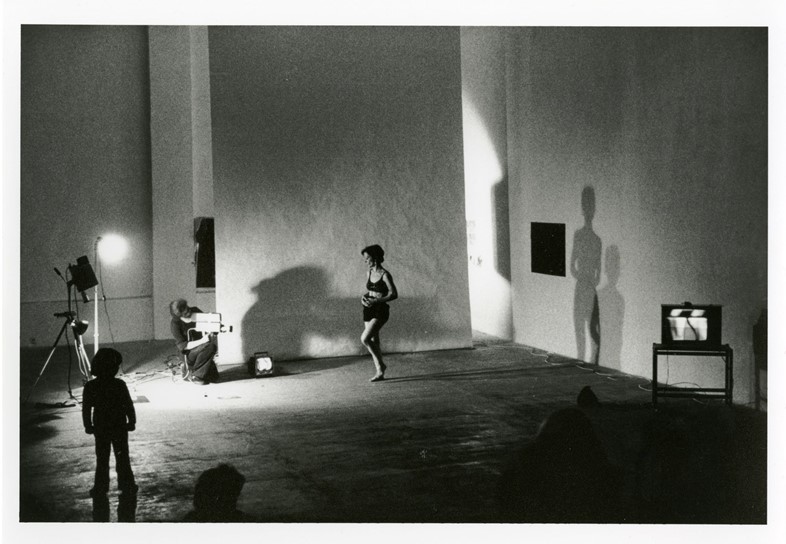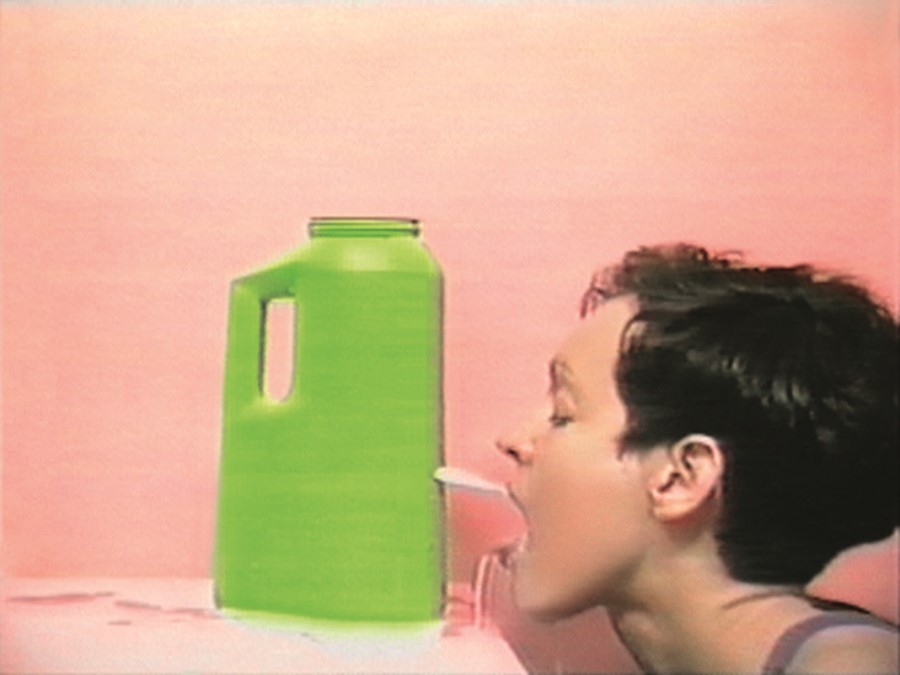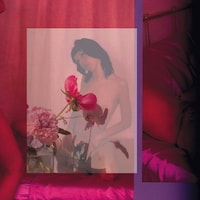We celebrate the visionaries who have elevated video as a tool for rebellion, protest, satire, and self-expression
The history of video art began in the mid-1960s, a moment in history when the promise and potential of technology intersected with a sense of flux that was pervading the culture. Barbara London, founder of MoMA’s video programme, recalls, “The time was right. We thrived in the ‘now’... With the aid of technology, humans seemed capable of anything. At the same time, 1960s counterculture instigated alternatives to social norms, with its free love and free speech, and the increasing prevalence of meditation and mind-bending drugs that torqued the individual’s perceptions and imagination. Out of this environment, video art burgeoned from the grass roots.”
London's new book, Video/Art: The First 50 Years, is a comprehensive vision of video art from the early practitioners up to present-day and beyond. Video/Art explores the impact and evolution of this “space-age medium”, envisioning the scope and possibilities that new technologies could create in the future.
While Korean artist Nam June Paik is widely considered to be the founder of video art, we take a look at the extraordinary female artists who feature in London's book. Artists who have incorporated video art into their work as a means of rebellion, protest, satire, and self-expression.
MIRANDA JULY
American artist, film director, and writer, Miranda July, is renowned for her unique vision, which enshrines all the tender, awkward and embarrassing moments of intimacy. She's applied her highly idiosyncratic practice to an array of mediums, including creating apps, dance, theatre, zines, public art projects, podcasts and audio art, both fiction and non-fiction writing, performance art, and film-making, including the critically acclaimed novel The First Bad Man (2015) and the award-winning feature film Me and You and Everyone We Know (2005).
Having changed her surname (she was born Miranda Grossinger, but decided to rename herself after a character from a zine she created as a teen, telling The Guardian it was a feminist act of “self-authoring”), July began her career as a performance artist, developing a style of multimedia installations she described as “live movies”. Another of July's notable forays into video art include the short film Nest of Tens (1999), which now resides in MoMA’s permanent collection and, like much of her other work, touches on perceptions of normality vs. abnormality and the huge, fathoms-deep weight of meaning in what deceptively appear to be tiny everyday gestures.
As a prolific creator, she continues to embrace digital technology and, drawing on the DIY-art ethos of her adolescent riot grrrl zine-making practices, she also uses Instagram as a platform to share moving image and short films.
JOAN JONAS
Joan Jonas is a pioneer of multimedia art, regarded as one of the most important figures to emerge from the burgeoning New York scene of the 60s and 70s. Her work, which brings together elements of video, dance, props, installation, performance, drawing, and audio, has been described as a kind of “collage of sound, visuals and emotion.” As a young artist she moved in circles with the likes of Robert Rauschenberg, Richard Serra, avant-garde composer John Cage, and choreographer Yvonne Rainer. Perhaps participating in this creative community influenced the multi-disciplinary approach she's now known for.
Joans' work features a preoccupation with fairy tales and mythology, and discovering alternative ways to retell these time-honoured narratives. It's also often notable for elements of ritualistic performance and has been described as “otherworldly”. Jonas herself has been reported as saying, “I rehearsed my work only at night, and when I rehearsed, I stepped into another space that was not the same as my everyday space. You could almost call it a séance.”
She first began experimenting with film in 1970, when she bought her first portable video camera whilst on a trip to Japan. Returning to New York, Jonas began making work with this new equipment. In 1972 she created “Organic Honey’s Visual Telepathy”, which is credited as being her first performance to include video. Live video feeds and monitors would become a feature of much of her future practice. Other notable works include “My New Theatre I: Tap Dancing” (1997), which incorporates scale models of full-size props and a projection of the artist’s feet dancing on a miniature stage.

PIPILOTTI RIST
Swiss-born visual artist Pipilotti Rist is considered one of the foremost pioneers of spatial video art. Influenced by mass-media forms, such as music videos and adverts, Rist's short films often touch on themes connected to the human body, the female experience of popular culture, and sexuality.
She's most known for her video self-portraits, which often depict her dancing and singing for the benefit of the lens. There's an intimate quality to these short films, which give the impression that the viewer may be glimpsing something private, not necessarily intending for public consumption.
A seminal work is often considered to be “I’m Not the Girl Who Misses Much” (1986) which takes its title from the opening line of the Beatles’ “Happiness (Is a Warm Gun)”. The video, a homage to the formative influence of pop culture, depicts the artist dancing and repeatedly singing the Beatles’ lyric. She told Serpentine curator, Hans Ulrich Obrist, “In my village in Switzerland, I had a small window on the art world through the mass media; through John Lennon and Yoko Ono I moved from pop music to contemporary art. In return, I will always be grateful to popular culture.”
As technology has advanced, so has the scope of Rist’s work. As she continuing to test the limitations of the medium throughout her career, her video projections have, over time, developed into immersive installations. “Pixel Forest”, (2016) invited viewers to move through a space created from 3,000 LED lights suspended from strings, giving the impression of a movie screen having exploded into the room.
MARTHA ROSLER
Martha Rosler is a highly distinguished American artist, writer, and theorist, whose work often engages with ideas around the female experience within the patriarchy. Her seminal film “Semiotics of the Kitchen” (1975) is a six-minute long parody of television cooking demonstrations of the day. Rosler dons an apron and appears in a kitchen, introducing a series of utensils in alphabetic chronology. Her presentation of the objects becomes increasingly aggressive, as she swipes the knife through the air and stabs the worktop with an ice pick, staring murderously into the lens. The meaning and purpose of each object being transformed, one by one, into a physical manifestation of rage at the subjugation and domestication of women. Culminating in T for “tenderiser” – possibly the most vitriolic of the demonstrations – Rosler then completes the alphabet by articulating the shape of each remaining letter with her own body.
Another recurring theme of Rosler’s work is the mass media’s depiction of war. “House Beautiful: Bringing the War Home” (1967-72) is a series of images of aspirational, middle-class American interiors juxtaposed with shocking pictures of the Vietnam war, all appropriated from the same popular lifestyle magazines of the time. In 2004 and 2008, Rosler added to this work by updating it with contemporary lifestyle imagery alongside pictures of the Iraq and Afghan conflicts.
CHERYL DONEGAN
American conceptual artist Cheryl Donegan is perhaps most known for her films “Head” (1993) and “Kiss My Royal Irish Ass” (1992), both of which deal with sex, gender, the portrayal of the female body in popular culture, and art politics.
“Head” is a single-take video art piece depicting Donegan drinking milk spurting from a hole in a container. Her mouth fills as she receives the milk and what she’s unable to swallow often leaks down her chin as she attempts to spit it back into the top of the container. When the flow of milk eventually dwindles and runs dry she licks the hole and the bottle itself. Writing for Artforum, photographer Collier Schorr recalled “Head” leaving her with the distinct impression: “...this girl must be one hell of a ride.”
Pre-empting the explicit imagery which has become ubiquitous in popular culture, the pink background and lurid green bottle lend “Head” the kind of pop promo aesthetic that film critic Chris Darke described as “an exemplary piece of post-MTV neo-porn.”
SHIRIN NESHAT
Shirin Neshat is an Iranian artist living and working in New York City. She uses film and photography to articulate and explore differences between polarised states such as Islam and the west, men and women, antiquity and modernity. She often works in black and white, perhaps to emphasise the sense of contrast and opposition in her subjects and themes.
Having left Iran as a teenager in 1974 to study at Berkley in Los Angeles, Neshat was deeply shocked when she eventually returned to her homeland in 1990. The Islamic Revolution had affected such drastic changes to the culture of the country she’d know as a child. Speaking to The Guardian, she explained how she "gravitated toward making art that is concerned with tyranny, dictatorship, oppression and political injustice. Although I don’t consider myself an activist, I believe my art – regardless of its nature – is an expression of protest, a cry for humanity.”
One of her most notable artworks, “Turbulent” (1998), invites the viewer to stand between two screens. The first shows an auditorium with an all-male audience and a man on the stage, singing a classical poem. The second screen shows an empty auditorium and a solitary figure of a woman on the stage. She waits silently and motionless while her male counterpart performs and is applauded. When she finally begins to sing, the noise is something otherworldly; at times an inarticulate exclamation of something painful and primal, at times a siren call to who knows what. The men on the opposing screen are stunned. They sense the danger and disruption, but they can’t look away.
SONDRA PERRY
Sondra Perry is an American artist from New Jersey who makes interdisciplinary work exploring the African-American experience and black heritage. A driving principle of her work is also to provide an alternative to the derogatory way the mass media so often portrays black people. A key principle of her practice also involves a commitment to make her work digitally available to schools, galleries or individuals who may wish to access it. The technology she uses to make her art also enables her to disseminate it.
Her solo show at the Serpentine Gallery, Typhoon coming on (2018), took Turner’s “Slave Ship” (1840) as its point of departure. Turner’s famous painting depicts 133 slaves being thrown overboard a British slave ship, on the captain’s orders, because a clause in the ship’s insurance policy would enable him to claim compensation for these lost ‘goods’. Using open-source animation software, Perry created an animated video of the painting and located it within an immersive environment accompanied by a soundscape.

Video/Art: The First 50 Years by Barbara London is published by Phaidon and available here from 22 January 2020










